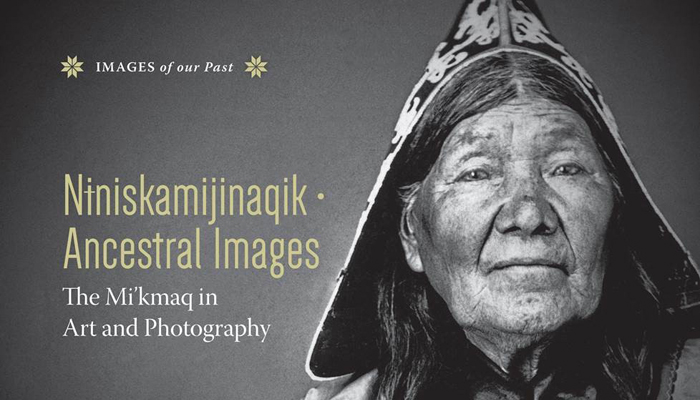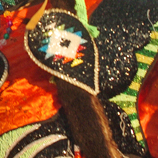Niniskamijinaqik / Ancestral Images
On June 17, the Museum of Natural History held a special event to launch Niniskamijinaqik / Ancestral Images: The Mi’kmaq in Art and Photography, the latest book by Nova Scotia Museum Curator Emeritus and author, Ruth Holmes Whitehead.
In addition to the launch event, the museum also opened a small exhibit that features images from the book, which will be on display throughout the summer.
Niniskamijinaqik / Ancestral Images: The Mi’kmaq in Art and Photography presents the unique culture of the Mi’kmaq through the remarkable and sometimes complex lives of individuals, as depicted in artwork or photography.
The book includes 94 compelling pieces of art and photography, chosen from more than a thousand extant portraits in different media, which show the Mi’kmaw people. Each image is an entry point to deeply personal history, a small moment or single person transformed into vivid immediacy for the reader.
As an acclaimed author, researcher and former curator with the Nova Scotia Museum, Ruth Holmes Whitehead has long been recognized for her significant scholarly achievements, and her contributions as both an ethnologist and a historian. This past December, she added a new accolade to her impressive list of accomplishments when she became a recipient of the Order of Nova Scotia.
The highest honour bestowed by the province, the Order recognizes individuals who have distinguished themselves in their fields and who have made lasting contributions to Nova Scotia. As one of five Nova Scotians officially invested during a ceremony on December 3, 2014, Ruth was selected for the prestigious award from a pool of 117 nominated candidates.
For Ruth’s former colleagues, the honour could not be bestowed on a more worthy recipient.
Throughout her more than 40 year tenure with the Nova Scotia Museum – first as the Assistant Curator of Ethnology and now, in her retirement, as a Curator Emeritus and a Research Associate – Ruth has always inspired others with her knowledge and dedication.
Dr. Katie Cottreau-Robins, Curator of Archaeology, remembers first meeting Ruth as an undergrad at St. Mary’s University.
“She was rather intimidating and even at that time, considered an expert on Mi'kmaq ethnology.”
Some years later, Dr. Cottreau-Robins had the chance to meet Ruth once again when they worked together in the field, studying the petroglyphs at Kejimkujik National Park.
“We worked, for the most part, at night with refracted light so we could pick up the very fine lines in the slate outcroppings,” recalls Dr. Cottreau-Robins. “The slate was still warm when we laid on it, given it had been in the sun all day. We talked about the [Mi’kmaq] legends as we worked, the stars above us. We have been friends ever since.”
Ruth’s ability to inspire continues today. Eleanor Bird, a visiting PhD student from the University of Sheffield, noted the impact Ruth has had on her work.
“Ruth agreed to meet with me because she had been involved with a piece of research at the Museum that was pertinent to the research I was doing in Halifax,” explains Ms. Bird. “In addition to helping me, she wanted to hear all about my PhD and the work I was doing, which was very kind of her. She gave me tips and advice for relevant materials and shared her vast knowledge with me.”
Renowned for her meticulous analysis, creativity, and sensitivity, Ruth has had a remarkable career. These attributes have earned her tremendous respect in her field and are evidenced throughout her many articles, books, and exhibitions, which detail historic Mi’kmaq and African Nova Scotian culture.
In addition Niniskamijinaqik / Ancestral Images: The Mi’kmaq in Art and Photography, her books include Stories from the Six Worlds: Micmac Legends, Six Micmac Stories, and The Old Man Told Us: Excerpts from Micmac History, 1500-1950. Her book, Black Loyalists, won the 2014 Atlantic Book Award for Scholarly Writing and was shortlisted for the Canadian Authors Association’s Lela Common Award for Canadian History.


